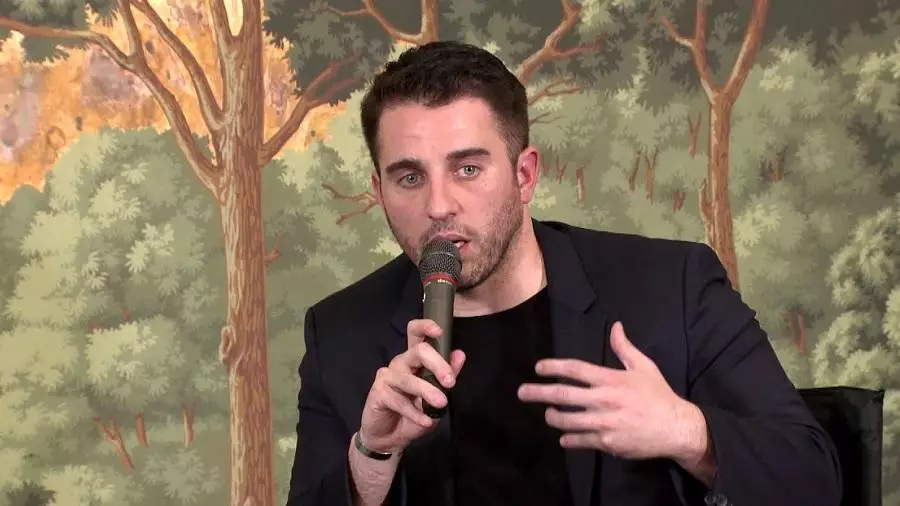In its efforts to reduce historic inflation and cool the economy, the Federal Reserve has used several euphemisms to describe the potential impact on American jobs, from economic “pain” to “unfortunate costs” and a “softening of the job market.”
Data, however, does not mince words. The Fed’s latest economic forecasts, released on Wednesday, alongside a third consecutive interest rate hike of 75 basis points, show that the central bank expects the country’s unemployment rate to rise to 4.4. % next year — up from 3.7% in August — and potentially up 5%.
Assuming there is no change in the workforce, this would mean about 1.2 million more people will be unemployed.
At the upper end of the Fed’s range, at 5%, that would be another 2.2 million unemployed.
“There is a gradual realization that the skewed view of being able to reduce the tightness of the labor market just by restricting the number of jobs is gone,” said Gregory Daco, chief economist at EY-Parthenon.
“We now have an implicit perception that cooling the labor market will require a significant increase in the unemployment rate and a cooling off in job growth with potential job losses.”
In the first eight months of 2022, the United States had an average net gain of 438,000 jobs per month, data from the Bureau of Labor Statistics show.
In August, 315 thousand jobs were added.
Before the pandemic, the US averaged fewer than 200,000 jobs a month.
Those numbers could go south relatively quickly, Daco said.
“I wouldn’t be surprised that in an environment where companies are being more cautious and are applying more discretion in their hiring decisions, we could see potential net job losses through the end of the year,” he said.
Labor market strength is expected to continue to moderate in the coming months, said Ataman Ozyildirim, senior director of economics at The Conference Board, in the latest publication of the think tank’s Leading Economic Index.
The August 2022 index showed a sixth straight month of declines, potentially signaling that a recession is imminent, according to The Conference Board.
“The average working week in manufacturing has declined in four of the past six months – a remarkable sign as companies reduce hours before reducing their workforce,” Ozyildirim said in a statement.
“Economic activity will continue to slow more broadly across the US economy and will likely contract. One of the main drivers of this slowdown was the rapid tightening of monetary policy by the Federal Reserve to combat inflationary pressures.”
A myriad of factors at play
Still, this isn’t a typical bout of high inflation or a typical job market, said Robert Frick, a corporate economist at Navy Federal Credit Union.
The pandemic has turned the job market upside down and shuffled supply chains to the point where, more than two years later, many of these challenges still persist and new ones have been added – such as rising food and energy prices – as a result of highly volatile developments. , such as the war in Ukraine and extreme weather events.
The Fed can’t just “click its heels three times, raise rates and drive inflation down,” Frick said.
“There are a multitude of factors going on right now, and it’s a mistake to think the Fed controls more than a handful of them,” he said.
The Fed may influence demand, however, with higher rates spreading across areas of the economy, making it harder to buy a home, more expensive to buy a car or finance a business, and making credit card balances much more expensive.
While parts of the demand side of the economy showed some slowdown in response to the Fed’s moves, the labor market remained atypical.
Unemployment remains close to historically low levels, job openings are twice as many as are looking for work, and labor force participation remains below pre-pandemic levels.
“I think the Fed is wrong if it thinks raising rates, even to 4% or more, will cower the job market, because we are still more than 4 million jobs below the pre-pandemic trend, and employers are still earning. money, and employers still need to hire people,” Frick said.
“And it’s really, now, like telling the tide not to rise — waiting for the job market to calm down.”
One of the main reasons Fed Chairman Jerome Powell wants more slack in the labor market is concerns that a tight employment situation will continue to drive up wages, which could keep inflation high.
As the unemployment rate rises, workers lose bargaining power for higher wages and households reduce spending.
“Powell said wage increases that contribute to inflation haven’t happened yet, but he sees that happening in the future,” Frick said.
“This is all very theoretical at this point. And I understand that if you want to decrease demand, one way to do that is to increase unemployment… but I really think it’s an open question whether it’s an issue now or not.”
No ‘painless’ path forward
To that end, American workers may have to bear the brunt of pain for a problem that is not their cause.
Powell and the Fed have won many detractors on that front, notably Massachusetts Democratic Senator Elizabeth Warren, who tweeted on Wednesday that she “was warning that President Powell’s Fed would put millions of Americans out of work — and I fear he is already on his way.” to do it.”
“It’s unfair,” Frick said. “But no one ever said the economy wasn’t cruel sometimes.”
The Fed’s latest economic projections are for GDP growth to slow from 1.7% to 0.2% by the end of this year.
“That’s a very slow level of growth and it could give rise to increases in unemployment, but I think it’s something that we think we need to have,” Powell said.
“We think we need to have more lenient labor market conditions as well. We are never going to say that there are many people working, but the real point is this: inflation, what we hear from people when we meet with them is that they are really suffering from inflation.”
“If we want to establish ourselves, make way for another period of a very strong labor market, we have to leave inflation behind. I wish there was a painless way to do this. There isn’t,” she added.
The next batch of key employment data, including monthly job openings, layoffs, and earnings, will arrive in the first week of October, when the Bureau of Labor Statistics will release the Job Vacancy and Turnover Survey and monthly jobs report for September.
Jobless claims data released on Thursday showed the number of initial jobless claims was 213,000 in the week ended Sept. 17, according to the Labor Department.
The previous week’s total of 213,000 was revised down by 5,000.
The weekly claims, which remain near some of their lowest levels in months, underscore how tightly employers are clinging to workers as the job market remains full of opportunities for job hunters.
Source: CNN Brasil
Joe Jameson, a technology journalist with over 2 years of experience, writes for top online news websites. Specializing in the field of technology, Joe provides insights into the latest advancements in the industry. Currently, he contributes to covering the world stock market.






